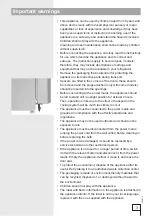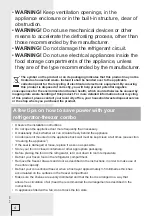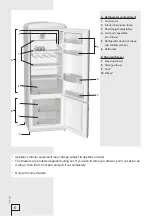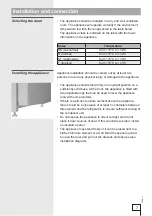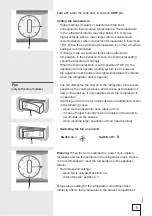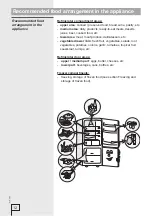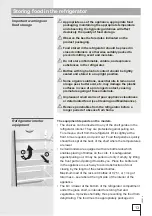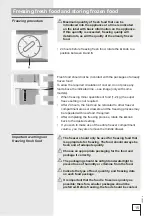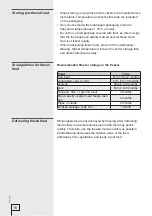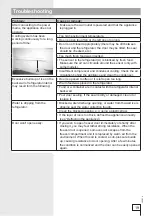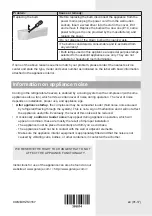
305814
The refrigerator does not require defrosting, as ice accumulated
on the back wall of the refrigerator compartment interior is melted
automatically.
The accumulated ice is thawed when the compressor is not
operating. The drops will drip through the opening in the
refrigerator back wall into a container above the compressor,
from where they will evaporate.
If an excessive layer of ice is accumulated on the refrigerator
back wall (3-5 mm), the appliance should be disconnected and
defrosted manually.
• The freezer should be defrosted when approximately 3-5 mm
of frost is accumulated.
• 24 hours before defrosting, rotate the
A
knob to a position
between
4
and
6.
After 24 hours, remove the frozen food from the freezer and
protect them from thawing.
• Disconnect the appliance – rotate the thermostat knob
A
to
STOP (0)
the position and unplug the power cord from the wall
outlet.
• Leave the door open until the frost or ice can be easily
removed from the surfaces using e.g. a plastic scraper. Be
careful not to damage the freezer interior surfaces. Remove
the frost or ice from the freezer using a cloth, before it melts.
• Do not use electrical appliances to defrost the appliance
(hairdryer etc.);
• When defrosting the refrigerator, do not use any defrosting
sprays as these may damage the plastic surfaces or harm
your health.
• Clean the appliance interior and wipe it dry (see cleaning the
appliance).
• Before putting the food back into the freezer, connect the
appliance to the power mains and rotate the
A
knob back to
the desired setting.
Automatic refrigerator
defrosting
Defrosting a
conventional freezer
17
Defrosting the appliance

